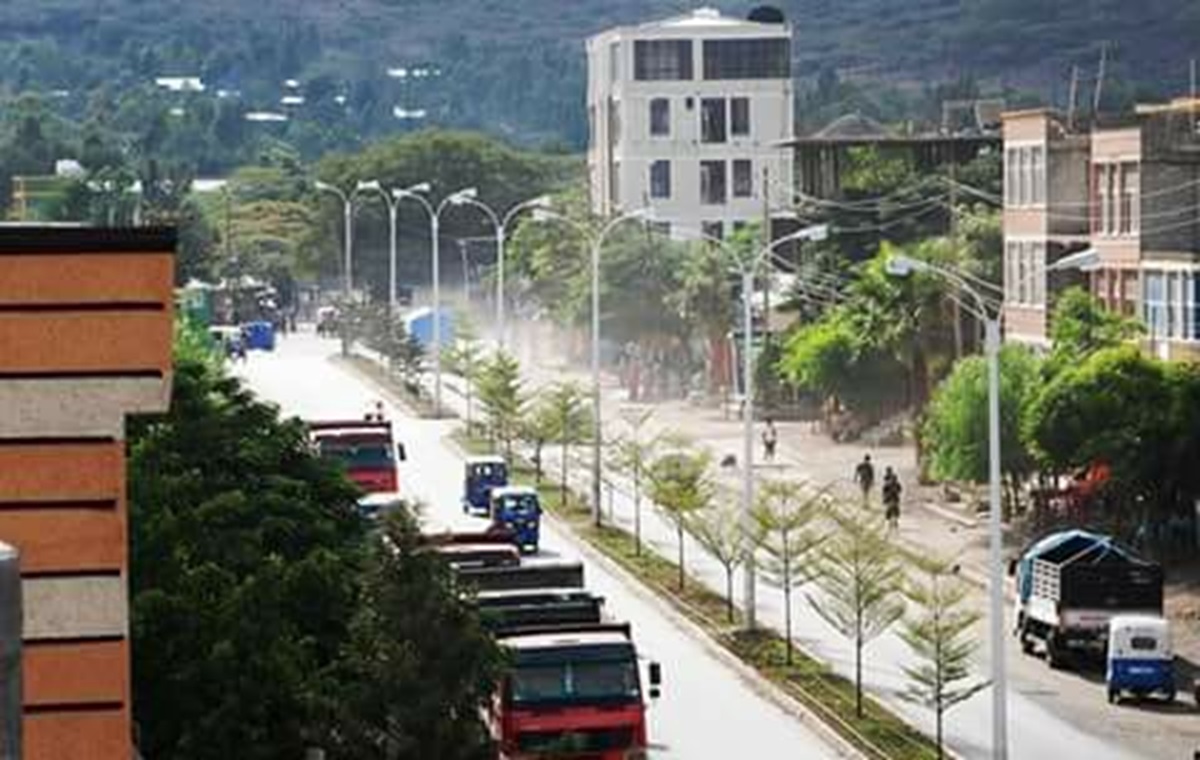News: Study reveals war undermined Tigray’s successful natural famine prevention strategy

Addis Abeba – A new study has found that, by driving deforestation, the war in Tigray is undermining a highly successful regional environmental restoration program that was intended to improve food security in a region affected by frequent famines. The program used tree planting, and soil and water management to boost the agriculture that 75% of Tigrayans rely on. If it continues, the deforestation trend could impact food security and reduce the ability of rural communities to recover from the war.
The Conflict and Environment Observatory (CEOBS) used satellite data to examine changes in vegetation during the first 12 months of the conflict, identifying declines in trees and shrubs affecting at least 280 km2 of Tigray. To make certain that the changes were as a result of the war, CEOBS excluded the influence of rainfall, temperatures, vegetation fires and locusts. Local sources support the idea that the vegetation declines are being driven by the collapse in the fuel supply in Tigray as a result of the blockade, with military forces and/or local communities turning to timber to use as a cooking fuel or in charcoal production.
“Vegetation loss matters for farmers in Tigray,” said CEOBS’ Researcher Henrike Schulte to Bühne, who led the study. “The recovery of vegetation, especially woody vegetation, was the keystone of a regional strategy to improve water and soil retention, and therefore agricultural productivity.” Trees and shrubs slow rainfall and help it to enter into the soil, this also reduces run-off that can strip away fertile topsoil.
The decades-old program in Tigray is a famously successful nature-based solution. Research had shown that in locations studied it had increased crop productivity by between 12-50%, and that water and soil interventions had reduced erosion rates by 68%, when comparing 1975 with 2006. Restoration was run by communities, with individuals volunteering each year to build dams, ponds and bunds to manage soil and water. Communities also agreed to exclude their livestock from almost 25% of Tigray to allow the vegetation to recover, these so-called exclosures had also played an important role to the re-greening of the region.
“The continued loss of woody vegetation due to the conflict, together with other forms of environmental degradation, threatens to erode two decades of successful landscape restoration across Tigray”
The study used data gathered before the war to help map where trees and shrubs were in 2020. Satellite data was then used to examine changes in how healthy the vegetation was, and how much was lost in the first 12 months of the war. Declines were visible across Tigray, with hotspots along a northeast-southeast axis, south of Shire, around the Kafta-Sheraro National Park, and in the southwest. While vegetation had increased in some areas of Tigray, the increases were at a lower rate than in previous years with similar growing conditions.
The continued loss of woody vegetation due to the conflict, together with other forms of environmental degradation, threatens to erode two decades of successful landscape restoration across Tigray, and with it, food security. However, it is likely that landscape restoration in Tigray is also buffering some of the impacts of the war on people and the environment by reducing the negative impact of conflict-driven vegetation loss.
“Because of the environmental restoration program, Tigray had more vegetation and a more productive landscape than would otherwise have been the case,” said Doug Weir, CEOBS’ Research and Policy Director. “This protective function suggests that nature-based solutions may be able to help reduce some of the effects of armed conflicts on people and ecosystems.” Dispatch







